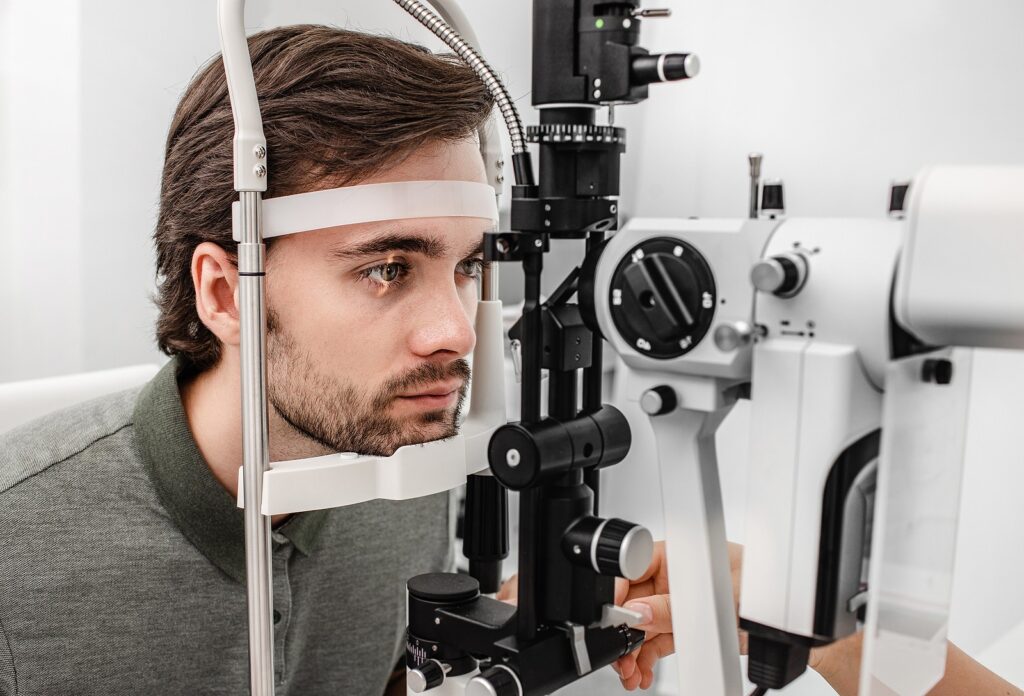Understanding LASIK: A Brief Overview
LASIK (Laser-Assisted In Situ Keratomileusis) is a popular surgical procedure designed to correct refractive vision issues, including myopia (nearsightedness), hyperopia (farsightedness), and astigmatism. This innovative technique has transformed the landscape of vision correction, providing millions of individuals with the ability to achieve clearer sight without the need for glasses or contact lenses.
The procedure involves reshaping the cornea of the eye using a laser, allowing light entering the eye to be properly focused onto the retina for improved vision and clarity. Introduced in the 1990s, surgery lasik has undergone significant advancements, making it one of the most common and successful forms of vision correction available today.
The Science Behind LASIK Surgery
The foundation of LASIK surgery lies in the intricate anatomy of the eye, especially the cornea, which is the transparent front part of the eye. The cornea’s curvature determines how light is bent and focused on the retina. In individuals with refractive errors, the cornea may be irregularly shaped, causing blurred vision.
LASIK addresses these imperfections by using a precise laser to reshape the cornea. The process begins with the creation of a thin flap in the corneal tissue using either a microkeratome or a femtosecond laser. Once the flap is lifted, an excimer laser is employed to remove microscopic amounts of corneal tissue. This meticulous reshaping enables the eye to focus light correctly, effectively correcting the refractive error. The entire procedure typically takes less than 30 minutes, and most patients experience a rapid improvement in vision, often within hours of the surgery.

The Evolution of Vision Correction Techniques
Over the years, vision correction techniques have evolved significantly, transitioning from rudimentary devices like glasses to more sophisticated surgical options. The journey began with early forms of refractive surgery, such as RK (Radial Keratotomy), which involved making incisions in the cornea to alter its shape.
As technology progressed, LASIK emerged as a revolutionary alternative that provided greater precision and predictability. Various advancements, including the introduction of wavefront-guided technology, have enhanced the effectiveness of LASIK. These innovations allow surgeons to tailor the treatment to the individual characteristics of a patient’s eyes, optimizing visual outcomes. Furthermore, the development of topography-guided LASIK has enabled even more personalized adjustments, addressing higher-order aberrations that can affect night vision and overall visual quality. As a result, patients can enjoy not only improved clarity but also a more refined visual experience, reducing issues such as glare and halos around lights.
The LASIK Procedure: What to Expect
Understanding what to expect during the LASIK procedure can help alleviate anxieties and prepare patients for a successful experience. The process typically spans several stages, beginning with a comprehensive pre-operative assessment that ensures candidates are suitable for the surgery.
Pre-Surgery Preparations
Before undergoing LASIK, a thorough evaluation by an ophthalmologist is essential. This assessment may include a detailed eye exam to measure corneal thickness, refractive error, and overall eye health. Patients are often advised to discontinue wearing contact lenses for a period before the evaluation, as they can alter the shape of the cornea.
Additionally, patients should discuss their medical history and any medications they are taking to help the surgeon determine if LASIK is the right choice. Once cleared for surgery, patients will receive specific instructions regarding the procedure and what to expect on the day of surgery. This preparation phase is crucial, as it not only sets the stage for a successful operation but also empowers patients with knowledge about the process, which can significantly reduce pre-surgery anxiety.
The LASIK Surgery Process
The LASIK procedure itself is relatively quick, typically lasting around 15 minutes per eye. Initially, numbing eye drops are administered to ensure patient comfort. Once the anesthesia takes effect, the surgeon creates the corneal flap and positions the laser to reshape the cornea.
As the laser targets the predetermined areas, the patient may experience a variety of sensations, including a slight pressure or the need to keep their eyes open. The actual laser application usually takes less than a minute, and patients are often surprised by how quick and painless the process is. The precision of the laser technology used in LASIK has advanced significantly, allowing for a more customized treatment plan tailored to each individual’s unique vision needs. This personalization can lead to enhanced visual outcomes and a higher level of satisfaction post-surgery. Read more about lasik surgery at https://www.health.harvard.edu/staying-healthy/lasik-surgery-what-to-expect
Post-Surgery Care and Recovery
After the LASIK surgery is completed, patients can expect a recovery period characterized by improved vision within a few hours. However, complete healing may take several days to weeks. During this time, patients will be advised to follow specific post-operative care instructions, such as using prescribed eye drops and avoiding strenuous activities.
It is also common to experience temporary side effects, including dryness, glare, or halos around lights, which typically resolve as the eye heals. Regular follow-up visits with the surgeon will ensure the recovery process is proceeding as expected and allow for monitoring of the vision outcomes. Patients are encouraged to communicate openly with their healthcare provider about any concerns or unusual symptoms they may experience during recovery. This proactive approach not only aids in a smoother healing process but also fosters a sense of reassurance, knowing that their eye health is being closely monitored by professionals dedicated to their well-being.
The Benefits of LASIK Surgery
Many people consider LASIK for its numerous advantages, which extend beyond improved vision. Understanding these benefits can help prospective patients make informed decisions about whether LASIK is right for them.
Improved Vision Quality
One of the primary benefits of LASIK surgery is the significant improvement in visual acuity. Many patients report achieving 20/25 vision or better, allowing them to engage in daily activities without the encumbrance of glasses or contact lenses.
The ability to enjoy clear vision enhances quality of life and can contribute to increased confidence in social and professional settings. This newfound clarity can also improve performance in various activities, such as driving at night or reading fine print, which can often be challenging for those reliant on corrective lenses. Furthermore, many patients express a sense of relief from the constant worry of losing or breaking their glasses, or dealing with the discomfort of contact lenses, thereby allowing them to focus more on their experiences rather than their eyewear.
Long-Term Cost Effectiveness
While the upfront cost of LASIK may seem substantial, many patients find that it leads to long-term savings. The elimination of the need for glasses, contact lenses, and related supplies translates into lower ongoing expenses. Over time, those savings can significantly outweigh the initial expense of the surgery, making LASIK a financially sound investment for many individuals.
Additionally, many insurance plans are beginning to recognize the long-term benefits of LASIK, with some offering partial coverage or financing options to ease the financial burden. As patients consider their overall eye care expenses over a lifetime, LASIK can emerge as a cost-effective solution that not only saves money but also enhances their overall lifestyle. This shift in perspective can be particularly valuable for younger individuals or those with active careers, where the ability to see clearly without corrective lenses can lead to increased productivity and fewer distractions.
Lifestyle Advantages of LASIK
In addition to improved vision and cost savings, LASIK offers lifestyle benefits that resonate with many patients. Activities such as swimming, hiking, or playing sports become more enjoyable and convenient without the hassle of eyewear.
Moreover, LASIK can free individuals from the daily routine of inserting and removing contact lenses, allowing for greater spontaneity and an enhanced quality of life. Overall, the surgery promotes a more active lifestyle and a sense of liberation from visual limitations. Beyond recreational activities, many patients find that their work performance improves as well; whether it’s in a high-pressure job that requires sharp focus or in creative fields where visual clarity is essential, LASIK can provide a significant edge. The freedom to wake up and see the world clearly without the need for glasses or contacts can also lead to a more positive outlook on life, encouraging individuals to pursue new hobbies or interests that they may have previously avoided due to their vision challenges. To learn about the hidden benefits that lasik provides click here.
Potential Risks and Complications of LASIK
Despite its many advantages, LASIK is not without risks. It is essential for individuals considering the procedure to understand the potential complications, though serious issues are uncommon.
Short-Term Side Effects
Common short-term side effects of LASIK may include discomfort, dryness, and fluctuations in vision during the initial healing phases. Patients are often prescribed artificial tears to manage dryness and advised to rest their eyes. This period of adjustment can vary from person to person, and while many experience a rapid improvement in vision, others may find that their eyes feel gritty or irritated for several days following the surgery.
Some individuals may also experience visual disturbances, such as halos or glare, especially at night. These side effects usually resolve as the cornea heals and stabilizes. It is worth noting that the degree of these disturbances can be influenced by factors such as the patient’s pre-existing eye conditions, the severity of their refractive error, and even the type of laser technology used during the procedure. Understanding these nuances can help patients set realistic expectations for their recovery journey.
Long-Term Risks
While LASIK has a high success rate, some patients may experience long-term complications, particularly those related to changes in vision or the need for enhancement procedures. In rare cases, patients may develop dry eye syndrome or experience under-correction or over-correction of refractive errors. These long-term effects can sometimes necessitate additional treatments, which may include glasses, contact lenses, or even a second LASIK procedure to refine the results.
It is crucial for those considering LASIK to have open discussions with their surgeon about potential risks and to weigh them against the benefits of the surgery. Furthermore, patients should also consider their individual lifestyle and how it may impact their recovery and overall satisfaction with the procedure. For instance, those who spend long hours in front of screens or work in dry environments may need to take extra precautions to manage their eye health post-surgery. Engaging in thorough pre-operative assessments and following post-operative care instructions can significantly enhance the likelihood of a successful outcome and minimize the risk of complications.

Determining If You’re a Good Candidate for LASIK
Deciding whether LASIK is the right choice depends on several factors, including eye health, age, and individual refractive errors. A careful assessment by a qualified eye care professional can help determine candidacy.
Health Conditions and LASIK
Certain health conditions may disqualify an individual from LASIK candidacy. These include, but are not limited to, autoimmune diseases, uncontrolled diabetes, and severe dry eye syndrome. Additionally, any history of eye infections or corneal abnormalities can complicate the eligibility for surgery.
During the pre-operative evaluation, potential candidates should disclose their complete medical history and discuss any concerns about their eye health.
Age and LASIK Eligibility
While LASIK is approved for individuals aged 18 and older, age can play a significant role in the decision-making process. Younger patients may still experience changes in their vision as their eyes mature, so surgeons often recommend waiting until vision stabilizes, typically in the mid-20s.
On the other hand, older adults may face presbyopia, the age-related decline of near vision that LASIK does not correct. Patients should consider their age and the likelihood of needing reading glasses later when evaluating LASIK as a viable option.
In conclusion, LASIK surgery represents a modern approach to vision correction that provides numerous benefits, improved quality of life, and the potential for long-term savings. Nonetheless, it is essential for anyone considering this procedure to weigh the risks, understand their candidacy, and consult with experienced professionals to make informed choices.
Related : Is LASIK Surgery Worth It? Debunking Common Myths and Misconceptions




